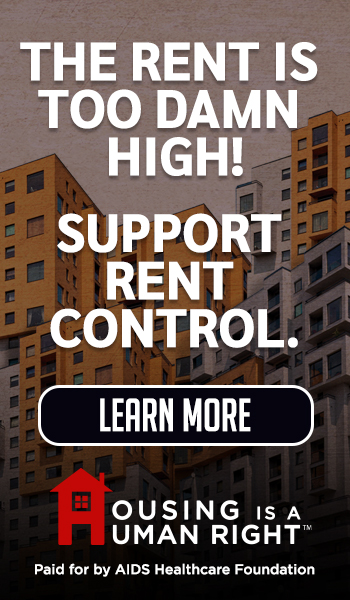Comments
iAUDIT! - A lot has happened in the homelessness arena in the past few days. Two of those events are particularly interesting because they reflect diametrically opposed approaches to homelessness.
First, the City of LA is appealing Judge Carter’s decision to appoint a monitor over performance reporting. This is quite remarkable given the testimony offered by Paul Webster, Executive Director of the LA Alliance for Human Rights and auditors from Alvarez & Marsal, (A&M). (See here for links to the transcripts). Attorneys for the Alliance made it clear neither the City nor LAHSA refuted the findings in A&M’s report, but the City’s $1,000 an hour attorneys exhausted a tremendous amount of energy and taxpayer money objecting to nearly every question and answer from Alliance witnesses. Judge Carter, who must have the patience of a saint, overruled nearly every objection. Despite its loss in court, the City is forging ahead with an appeal, desperately trying to avoid accountability for the billions it has spent on homelessness. Rather than admitting its programs have failed and implementing changes, it will use more taxpayer money defending the status quo. I’ll dive deeper into that in an upcoming column.
The second story is getting more press. On July 24, the Trump administration rolled out an executive order on homelessness. The order calls for an end to many Housing First and Harm Reduction policies, citing rising homelessness despite years of increased funding. There are a couple things to keep in mind when reading the order. First, executive orders aren’t law, and the administration is limited in in what it can actually do until Congress approves funding changes. Second, you have to get past the political posturing. The order cites increases in homelessness under the Biden administration, omitting it also increased during Trump’s first term. And the terminology is certainly politically charged: “vagrant” harkens back to the Grapes of Wrath days. Consistent with his “law and order” philosophy, the order’s title, “Ending Crime And Disorder On America’s Streets” conflates crime and homelessness. The majority of homeless people are not criminals, but, as a study from San Diego’s District Attorney’s Office shows, they are “involved with the justice system as victims and perpetrators at dramatically higher rates than the rest of the population”. Being homeless isn’t a crime, but it exposes the unhoused and surrounding communities to higher crime rates.
The executive order doesn’t get into the details of new policies; it directs the responsible departments to create policies that match the broad goals stated in the order. The order reflects what many voices for reform have been saying for years: Housing First doesn’t work and No Barrier/Harm Reduction policies have failed, and have only made the homelessness crisis worse. The order doesn’t just defund programs; it says it aims to fund more effective programs. Section 5(a) states, “The Secretary of Health and Human Services and the Secretary of Housing and Urban Development shall take appropriate actions to increase accountability in their provision of, and grants awarded for, homelessness assistance and transitional living programs. These actions shall include, to the extent permitted by law, ending support for “housing first” policies that deprioritize accountability and fail to promote treatment, recovery, and self-sufficiency; increasing competition among grantees through broadening the applicant pool; and holding grantees to higher standards of effectiveness in reducing homelessness and increasing public safety. The underlined passages reflect what’s been happening in LA’s homelessness programs for years: millions spent on unaccountable programs run by huge nonprofits that have a stranglehold on policymaking and the contract process. In fact, this section is not much different from Democratic Mayor of San Francisco Dan Lurie’s “Breaking the Cycle” policy that calls for sobriety-based support programs and rebidding contracts as they expire.
Reactions have varied. From news outlets, one of the more balanced pieces was from Steve Lopez of the LA Times. He correctly noted the executive order says nothing about housing affordability, which is a crisis in and of itself, especially for the working poor and seniors. I’ve written about that crisis before, as has CityWatch’s Dick Platkin, far more eloquently than I have. Lopez also pointed out the difficulty translating the order’s call for broadening involuntary commitment into actual policy, given potential conflicts with court decisions and existing laws, and a universal lack of funding for institutional mental health facilities. He also criticized the lack of mental health and drug addiction services for people on the street.
Mr. Lopez’s article reflects the disconnect between reality on the street and what advocates want to believe. He cited the June 2023 UCSF Benioff study that “proved” homelessness is primarily caused by a lack of affordable housing. The study, one of largest surveys of homeless people ever taken in California, showed high rates of mental health issues (82 percent of those surveyed) and substance abuse (65 percent). Significantly, 64 percent of those who reported regular drug use said their use began before they became unhoused, (page 27). Despite these high rates of mental and substance abuse issues, the study concluded what was needed was more housing. That disconnect between behavioral issues and housing goes to the heart of Housing First’s philosophy; that housing is a goal unto itself and takes precedence over treatment. That conclusion is understandable because the study’s leader, Dr. Margot Kushel, is a passionate Housing First advocate. Christopher LeGras, writing for the Westside Current, did an excellent critique of the study, detailing serious flaws in its methods and biases. Among them is the fact the survey only gathered information from people who could coherently respond. No mention was made of the thousands of people who are so deeply disturbed or in the depths of a drug-induced stupor they could not answer.
That response bias is reflected in Mr. Lopez’s article as well. His article includes one of the elements I most dislike in many homelessness articles: it uses individual cases to support general statements. Picking a few people who are coherent enough to tell their stories or who fell into homelessness because of a specific set of circumstances is not indicative of the entire homeless population. Any comprehensive program must address those who cannot make decisions in their own best interests.
Calmatters also published an article noting the common ground between the executive order and some of what Governor Newsom has already implemented.
In contrast to Mr. Lopez and Calmatters, responses from the advocacy community were predictably shrill and catastrophic. Many nonprofit leaders warned of disaster (by which they probably mean no double-digit salary increases this year). What I found most troubling was the remarks by Sarah Mahin, the director of the County’s new homelessness department. She said, “The people we serve are more at risk than ever before and resources are disappearing”. What she didn’t mention was the $1 billion in new annual revenue from Measure A dedicated solely to homelessness programs. She also failed to mention the billions wasted on ineffective programs, where tens of thousands of people are left on the street with no services and no support. Her comments reflect a stubborn commitment to maintaining the status quo, which is very troubling coming from the person the County selected to bring reform and innovation to homelessness programming.
In fact, the executive order doesn’t cut funding off; it redirects it. If local governments adopt programs that meet the order’s guidelines (assuming they become official policy), funding will continue and could potentially increase for programs that perform well. The policies outlined in the order are certainly a break from the past, but that is exactly what’s needed. It is indeed an existential threat to large nonprofits that are paid with almost no accountability nor evidence of performance, as has been shown most recently in the County’s audit of LAHSA and A&M’s review of City programs. It is also a threat to local government officials who have staunchly supported those nonprofits and the advocacy groups that helped elect them. After years of pouring money into local government coffers, the federal government may finally start requiring accountability for outcomes.
There are many Trump administration policies with which I disagree, but this column isn’t an outlet for my personal political views. Opposing an initiative because it comes from an administration one dislikes isn’t advocacy; it is opposition based on ideology instead of content. The executive order on homelessness is one that should have been issued long ago and could have come from a Democrat just as easily as a Republican. Critics concerned about its potential effects should be more concerned about why they continue to defend current policies with a 30-year history of failure. Some of the administration’s changes might fail, but at least it’s willing to encourage a new approach. If local leaders had been willing to try new solutions years ago, perhaps this executive order would not have been necessary.
(Tim Campbell is a longtime Westchester resident and veteran public servant who spent his career managing a municipal performance audit program. Drawing on decades of experience in government accountability, he brings a results-driven approach to civic oversight. In his iAUDIT! column for CityWatchLA, Campbell emphasizes outcomes over bureaucratic process, offering readers clear-eyed analyses of how local programs perform—and where they fall short. His work advocates for greater transparency, efficiency, and effectiveness in Los Angeles government.)
















